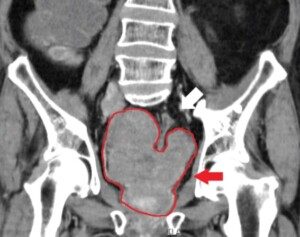Just how many minutes a week of exercise would actually make a difference in lowering the risk of Alzheimer’s and other forms of dementia?
And how vigorous would it have to be?
You may already know that consistent exercise lowers the risk of cognitive impairment that’s age related.
You may also be wondering, though, just how few those minutes could be per week that would still be effective at reducing the risk of dementia, including Alzheimer’s.
Another fair question is if a new program of regular physical activity could actually lower this risk in elderly people who have frail rather than “healthy old” bodies.
A study led by researchers at the Johns Hopkins Bloomberg School of Public Health suggests that even small amounts of exercise can significantly reduce the risk of dementia, even for frail older adults.
The study found that engaging in just 35 minutes of moderate to vigorous exercise per week, compared to no physical activity at all, was linked to a 41% lower risk of developing dementia over an average four-year follow-up period.
But 35 minutes per week doesn’t mean that a time investment over that cutoff point wouldn’t yield even more of a reduced risk. It actually would.
The research, which analyzed data from nearly 90,000 adults in the UK, showed that the more physical activity a person engaged in, the lower their risk of developing dementia.
- Participants who engaged in 35 to 69.9 minutes of physical activity per week experienced a 60% reduction in dementia risk.
- Those who exercised 70 to 139.9 minutes per week saw a 63% reduction
- Those who participated in 140 minutes or more per week had a 69% lower risk of developing cognitive impairment with age.
How was this encouraging study done?
The study used data from adults who wore trackers that measured their physical activity.
The participants, mostly 50 and older, were part of the UK Biobank, a long-term research project that follows the health of about 500,000 people.
For the study, 89,667 adults were tracked for their physical activity levels between February 2013 and December 2015.
Over the following years, their health was monitored, and 735 participants were diagnosed with dementia.
Frail Older People Benefited
Even for frail senior age people — who are more likely to experience negative health outcomes – exercise or physical activity appears to offer protection against dementia including Alzheimer’s.
For these people, small amounts of exercise could be enough to make a difference.
The researchers found that the relationship between increased activity and reduced dementia risk was similar even for those who were classified as frail or “pre-frail.”
“Frail elderly” refers to older adults who have weakened physical health and are more vulnerable to illness, injury and disability.
To make this easier to understand, since increasing frailty comes with advanced age, think of the senior age people you’ve seen scooting around in their garden bending over and squatting, walking a dog for a mile without any problem, spending all day on a golf course, or at the gym using weight machines after briskly walking on a treadmill without holding on.
They wouldn’t be classified as frail, when compared to same-age elderly people who have difficulty doing basic household chores, are on many medications, make frequent trips to the doctor and struggle with prolonged leisure activities.
So according to this study, even the latter group of people over 65 could still lower their risk of Alzheimer’s disease by taking up consistent exercise, week after week, for as little as 35 minutes.
This new program of physical activity should not be considered already built into any housework that they’re already doing. Examples of new exercise for frail older people might be:
- A fitness class for seniors at the local recreation center
- Joining a gym to do strength training exercise on equipment
- Walking in the neighborhood or a park
- Using resistance bands or small dumbbells at home
The study’s lead author, Dr. Amal Wanigatunga, explains that this research adds to the growing body of evidence suggesting that exercise can help protect against dementia.
In general, both the U.S. Department of Health and Human Services and the UK National Health Service recommend that adults aim for at least 150 minutes of moderate-intensity exercise per week, or roughly 20 minutes per day.
However, these guidelines can feel difficult to follow, especially for older adults or those with health issues.
So it’s good news that it’s been shown that smaller amounts of activity, such as just five minutes a day, can have a noticeable effect on reducing dementia risk.
This doesn’t mean one should think, “Just five minutes a day of exercise? I already get that doing projects in my workshop,” or, “I already get at least five minutes of physical activity just by waiting on my husband.”
WRONG. That five minutes should be five minutes of dedication to pure, structured exercise that you have not been doing. It should be a variable in this equation, not a built-in constant.
Examples of adding five minutes a day of exercise might be:
- Marching in place with high knees while lifting very light dumbbells or full soup cans overhead or even halfway
- Shallow lunging side to side
- Yoga flows
- Tension band or dumbbell exercises
- Use of cardio equipment at a challenging pace
- Nonstop very gentle bouncing on a mini-trampoline
- Taking your tiny dog on a walk if that dog never gets walked
While this study does not establish a direct cause-and-effect relationship between physical activity and a lower risk of dementia, the results are consistent with the hypothesis that exercise can help protect brain health.
The researchers also accounted for the possibility that people with undiagnosed dementia might be less active and therefore skewing the results.
However, the findings remained strong even after excluding participants diagnosed with dementia during the first two years of the follow-up period.
 Lorra Garrick is a former personal trainer certified by the American Council on Exercise. At Bally Total Fitness, where she was also a group fitness instructor, she trained clients of all ages and abilities for fat loss and maintaining it, muscle and strength building, fitness, and improved cardiovascular and overall health.
Lorra Garrick is a former personal trainer certified by the American Council on Exercise. At Bally Total Fitness, where she was also a group fitness instructor, she trained clients of all ages and abilities for fat loss and maintaining it, muscle and strength building, fitness, and improved cardiovascular and overall health.
.










































